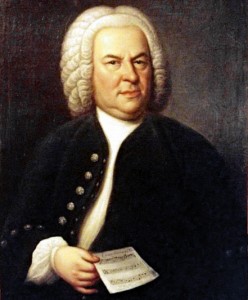J.S. Bach, Cello Suite No. 3 in C major, BWV 1009
 In August last year we did several consecutive posts on the Baroque suite. The suite consisted of a collection of dances forms, usually an allemande, courante, sarabande, and gigue. Suites could often include other dances as well. We finished the series with a work by J.S. Bach (his French Suite in G Major), whose works frequently represent the culmination of the Baroque era.
In August last year we did several consecutive posts on the Baroque suite. The suite consisted of a collection of dances forms, usually an allemande, courante, sarabande, and gigue. Suites could often include other dances as well. We finished the series with a work by J.S. Bach (his French Suite in G Major), whose works frequently represent the culmination of the Baroque era.
But we never got around to the unaccompanied suite, and that form deserves some attention. The term “unaccompanied” in this context refers to a work for a solo instrument that typically plays a single voice or melody, such as violin or cello. You can draw a bow across two strings simultaneously (called double stops), but Bach’s writing implies more than two voices. He creates the illusion of a full contrapuntal texture of three or four voices. He does this partly with double stops and arpeggiations, and also through the use of short melodic figurations in alternating voices.
Bach produced two collections in this style: six cello suites and six sonatas and partitas for solo violin. All were written while Bach was stationed in Köthen (see Professor Carol’s video on Bach in Köthen.)
The six Cello Suites were rarely performed prior to their first recording by Pablo Cassals in 1936. Since then, virtuoso cellists have considered them an essential part of the repertoire. They follow a mostly consistent form. They all begin with a prelude, allemande, courante, sarabande, and conclude with a gigue. In between the sarabande and gigue are either two minuets, two bourrées, or two gavottes. In between the sarabande and gigue are either two minuets, two bourrées, or two gavottes.
Cello Suite No. 3 features a pair of bourrées. These pairs function as a single movement with the first of the pair returning after the second in an A-B-A form. You may find the first bourrée of this suite familiar.



